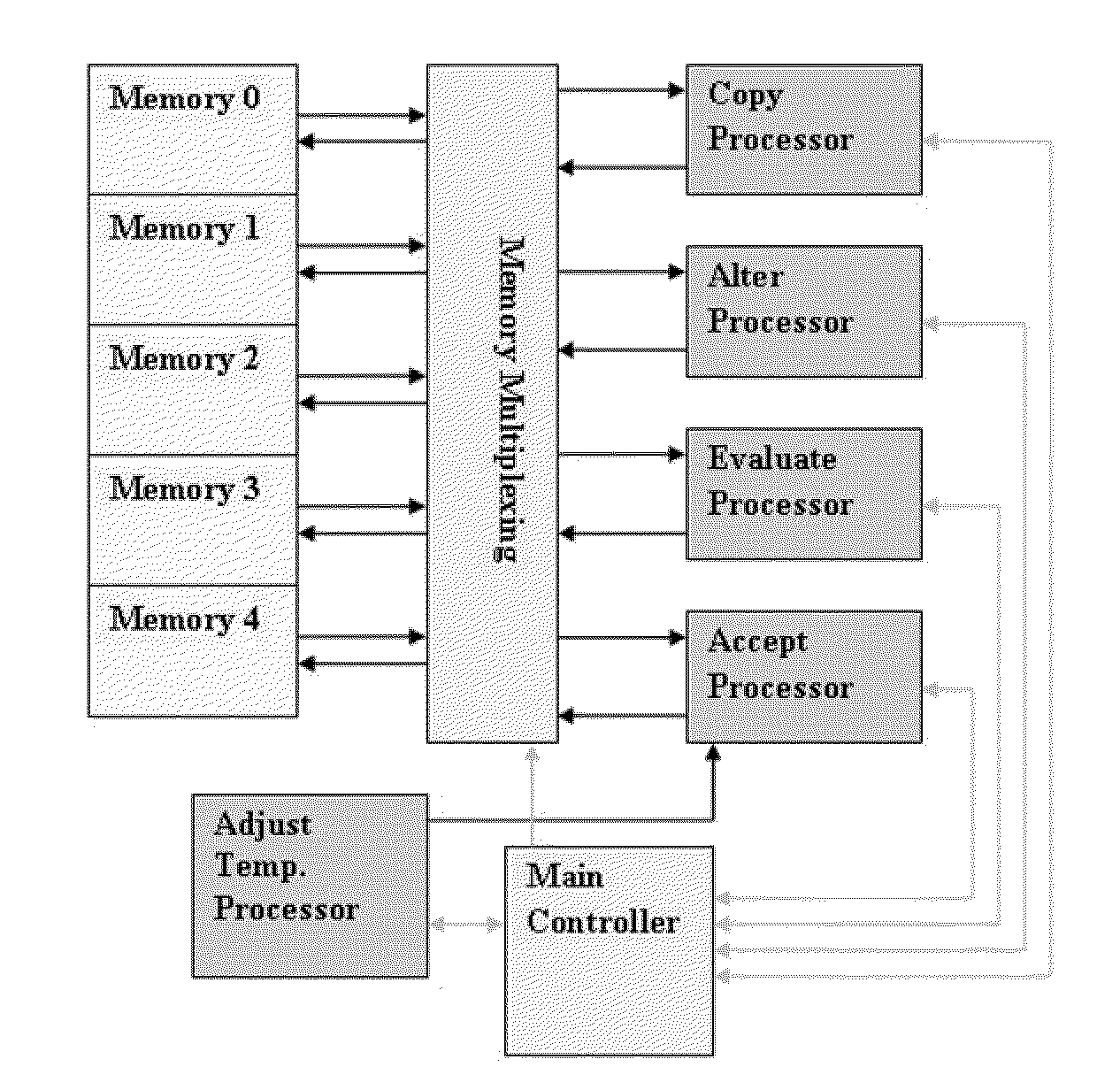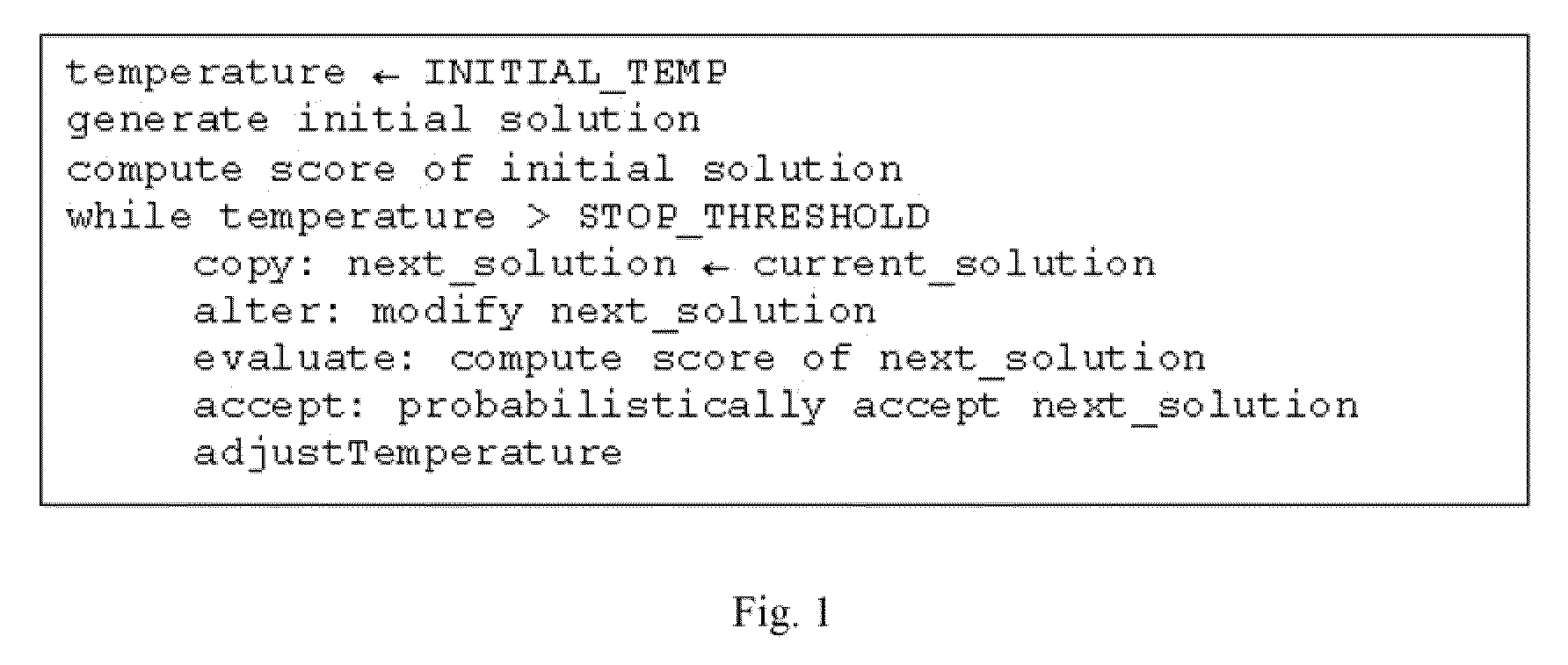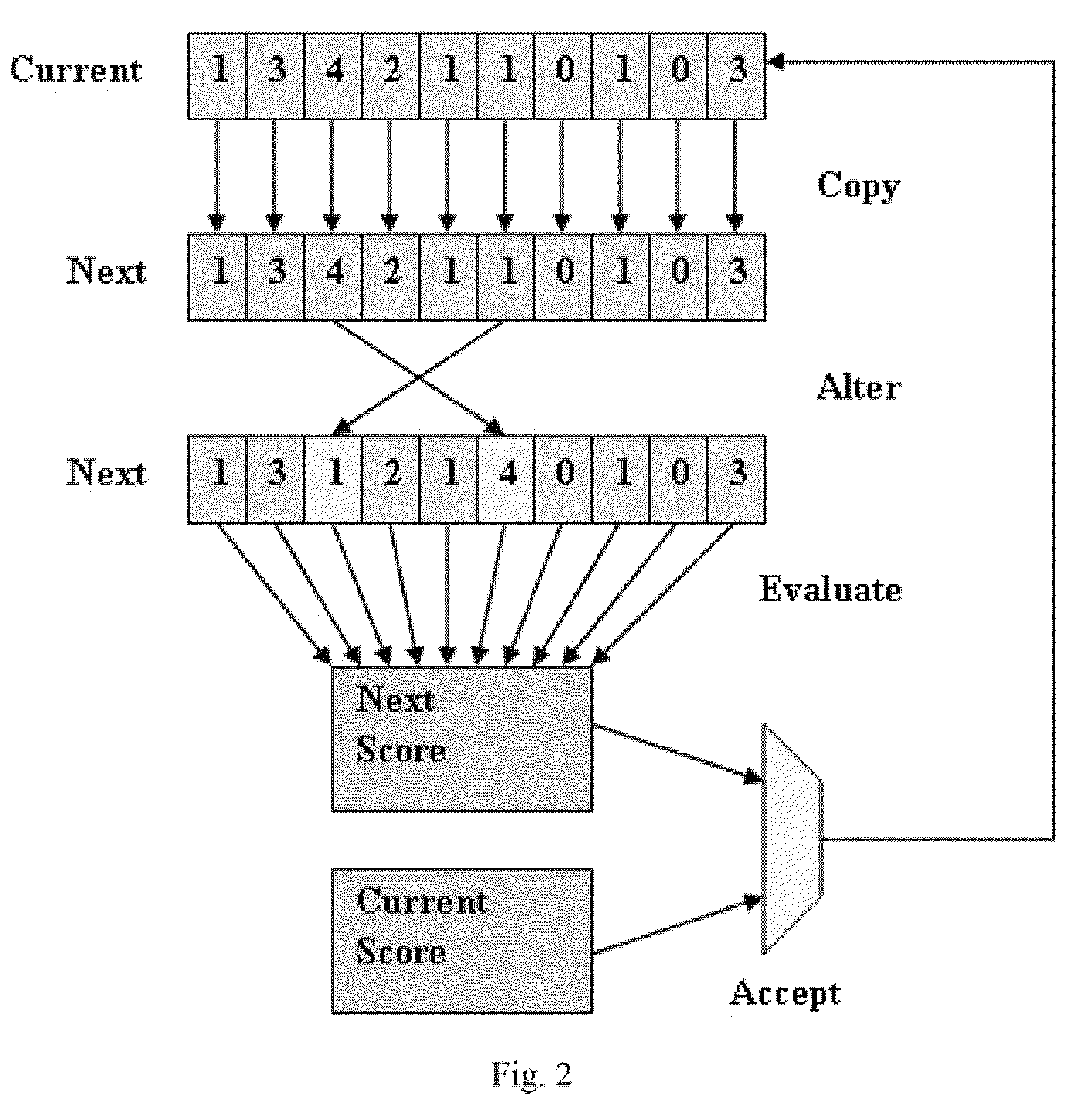FPGA simulated annealing accelerator
a technology of simulated annealing and accelerator, which is applied in the direction of instruments, multi-objective optimisation, cad techniques, etc., can solve the problems of imposing high nre (non-recurring engineering) costs, unable to adapt to algorithmic changes in the post-deploy/fabrication phase, and unable to achieve the flexibility of algorithmic changes, etc., to improve the probability of finding the best solution, reduce the temperature, and prolong the program execution
- Summary
- Abstract
- Description
- Claims
- Application Information
AI Technical Summary
Benefits of technology
Problems solved by technology
Method used
Image
Examples
Embodiment Construction
[0035]We disclose a unique hardware architecture, derived from an ANSI C implementation of iterative repair using simulated annealing. In this implementation for the working example, a solution is represented as a string of start times for events numbered 0 to 99 for a problem consisting of 100 events that need to be scheduled. Events have dependencies, meaning that certain events must complete before others can start. FIG. 3 depicts this event dependency graph. Each event utilizes one unit of one of four types of resources. There are four resources of each type.
[0036]The resource type associated with each event is designated by the shape of the event node in FIG. 3. Each event, takes one time step to complete. Additional input parameters are a maximum schedule length of 32 time steps, an initial temperature of 10,000, a cooling rate of 0.9999, and a termination threshold of 0.0001. This means that the schedule cannot exceed 32 time steps, the simulated annealing temperature starts ...
PUM
 Login to View More
Login to View More Abstract
Description
Claims
Application Information
 Login to View More
Login to View More - R&D
- Intellectual Property
- Life Sciences
- Materials
- Tech Scout
- Unparalleled Data Quality
- Higher Quality Content
- 60% Fewer Hallucinations
Browse by: Latest US Patents, China's latest patents, Technical Efficacy Thesaurus, Application Domain, Technology Topic, Popular Technical Reports.
© 2025 PatSnap. All rights reserved.Legal|Privacy policy|Modern Slavery Act Transparency Statement|Sitemap|About US| Contact US: help@patsnap.com



